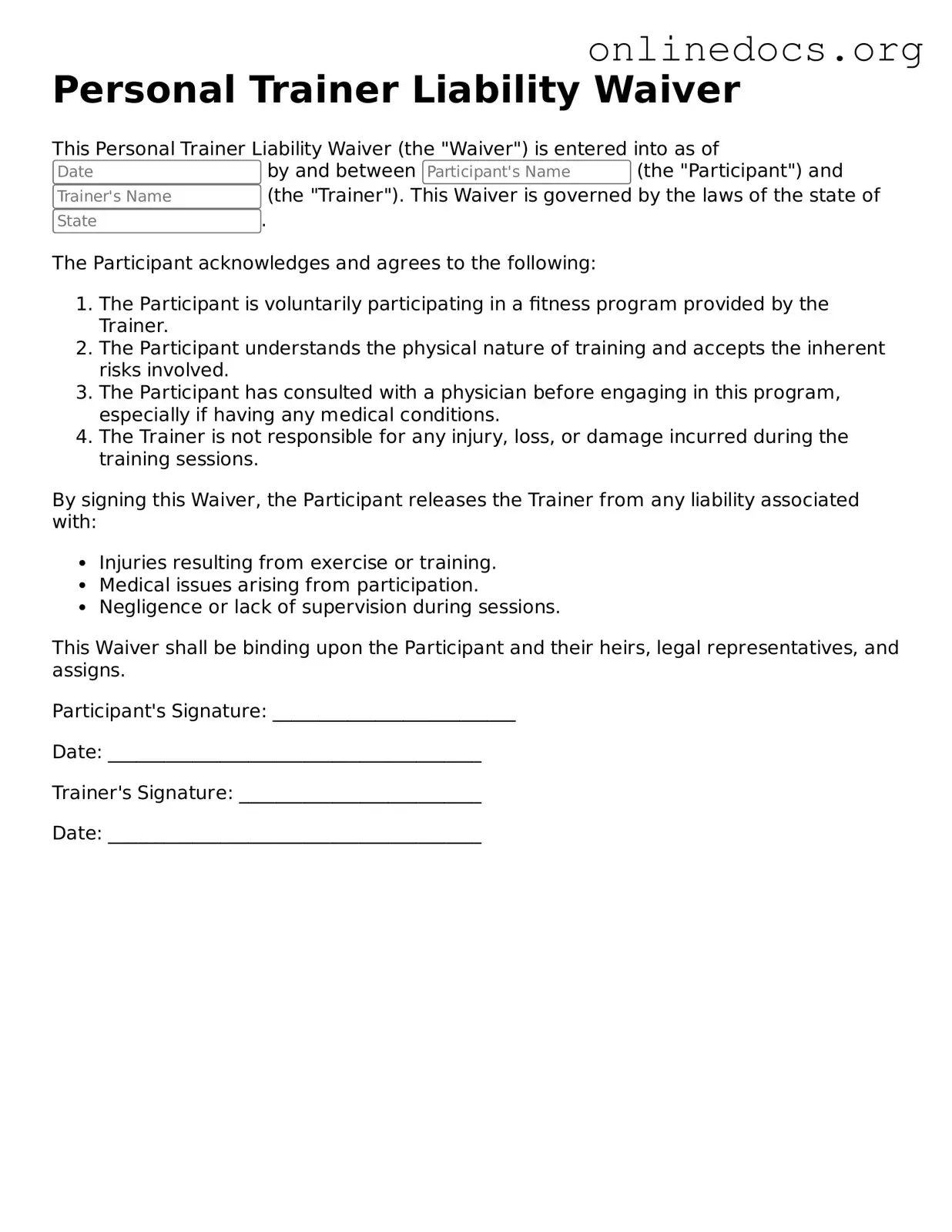Filling out a Personal Trainer Liability Waiver form is an important step for anyone engaging in fitness training. However, many individuals make common mistakes that can undermine the purpose of the waiver. Understanding these pitfalls can help ensure that the form is completed correctly and effectively.
One frequent mistake is failing to read the entire waiver before signing. Many people skim through the document, missing critical information about risks and responsibilities. Taking the time to read and understand the waiver helps individuals make informed decisions about their participation in training sessions.
Another common error is not providing accurate personal information. It’s essential to fill out the form with correct details, including name, address, and emergency contact information. Inaccurate information can lead to complications in case of an emergency or if any issues arise during training.
Some individuals neglect to disclose relevant medical history on the waiver. If someone has a pre-existing condition or injury, failing to mention it can lead to serious consequences. Trainers need this information to provide safe and effective training tailored to the individual's needs.
Additionally, individuals often forget to sign and date the waiver. A signature is a crucial part of the document, as it indicates agreement to the terms outlined. Without a signature, the waiver is incomplete and may not hold up in a legal context.
Another mistake involves not asking questions about the waiver. If any part of the form is unclear, individuals should seek clarification from the trainer or facility. This ensures that they fully understand what they are agreeing to and can avoid any surprises later on.
People sometimes assume that a waiver protects against all forms of liability. In reality, waivers typically cover only certain risks. Understanding the limitations of the waiver can help individuals recognize the importance of safety and personal responsibility during training.
Moreover, some individuals fail to keep a copy of the signed waiver. Having a personal copy can be useful for reference, especially if there are disputes or questions about the terms agreed upon. Keeping a record is a simple yet effective way to protect oneself.
Lastly, individuals may not consider the timing of signing the waiver. Signing it too close to the start of a session can lead to rushed decisions. Taking time to complete the waiver well before training allows for careful consideration and avoids any last-minute confusion.
By being aware of these common mistakes, individuals can ensure that their experience with personal training is safe and positive. Properly completing the Personal Trainer Liability Waiver form is a crucial step in taking responsibility for one’s fitness journey.
